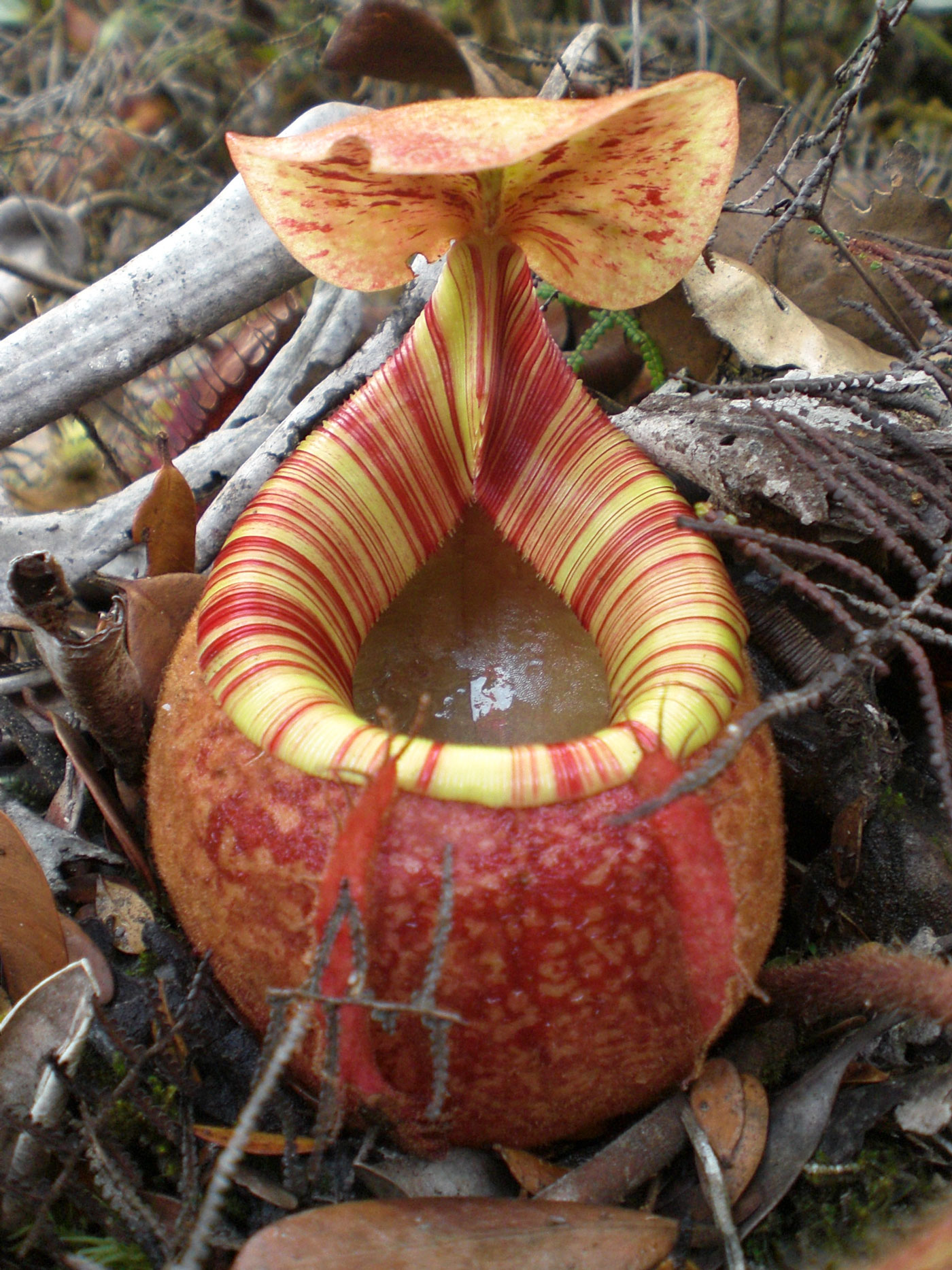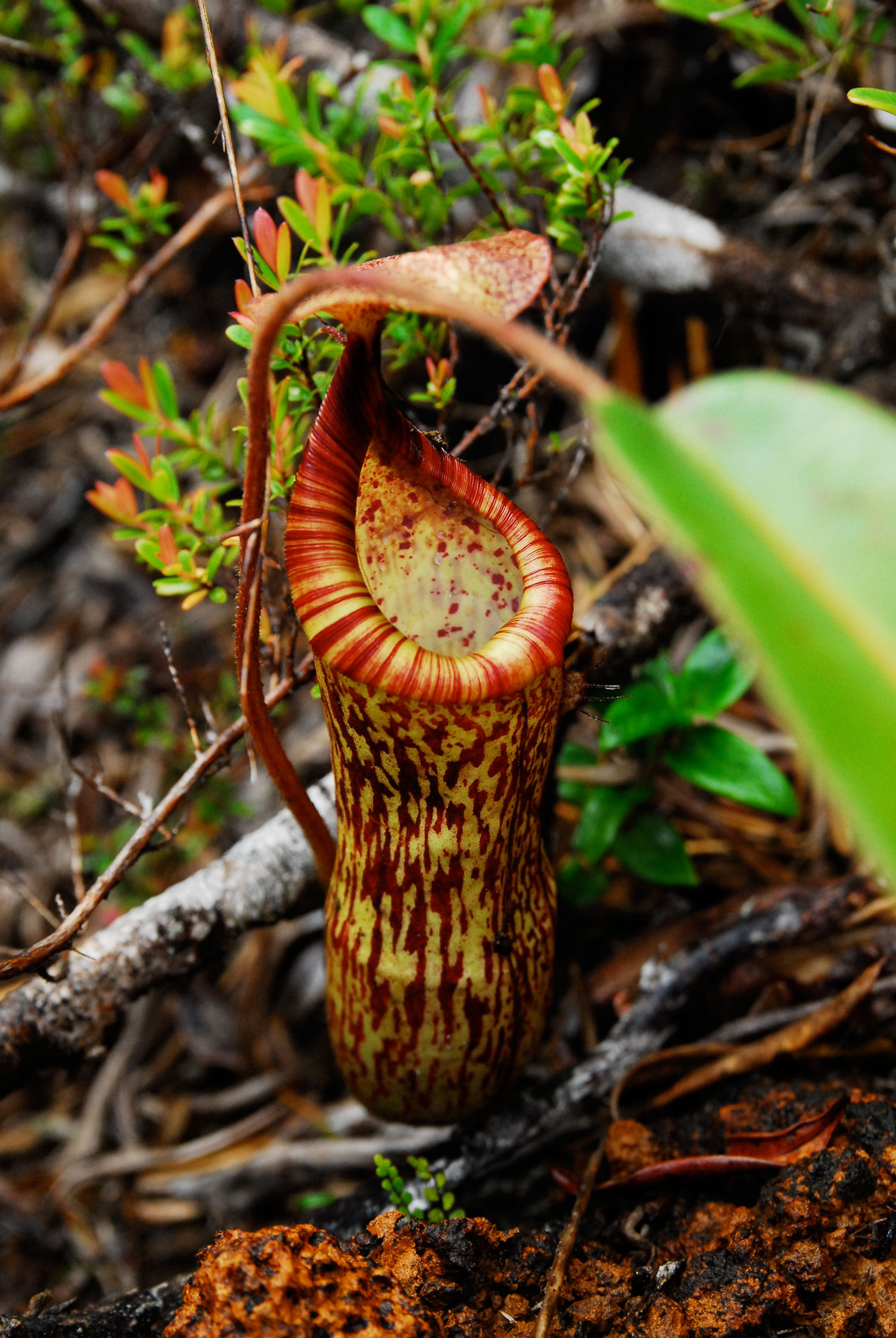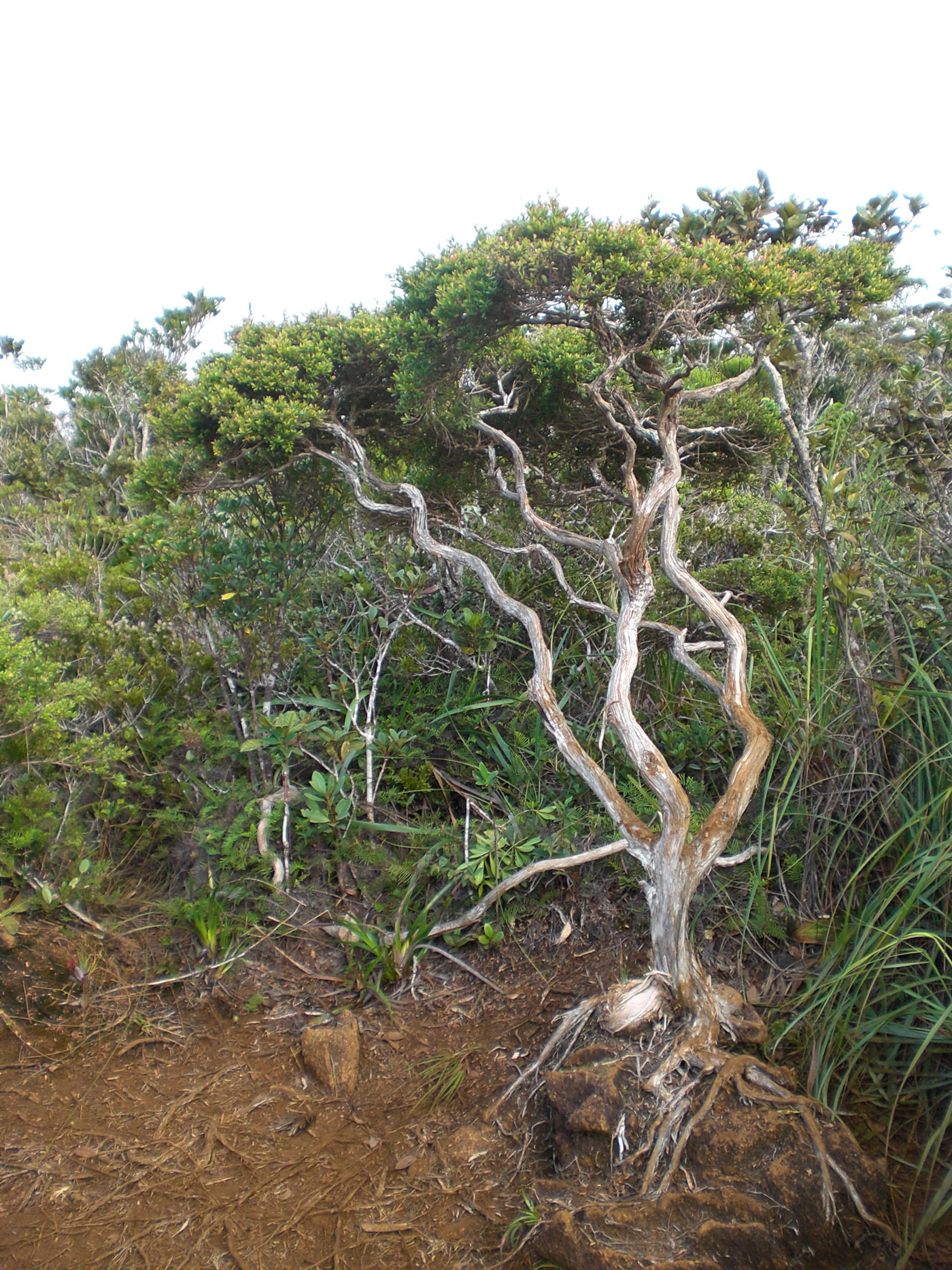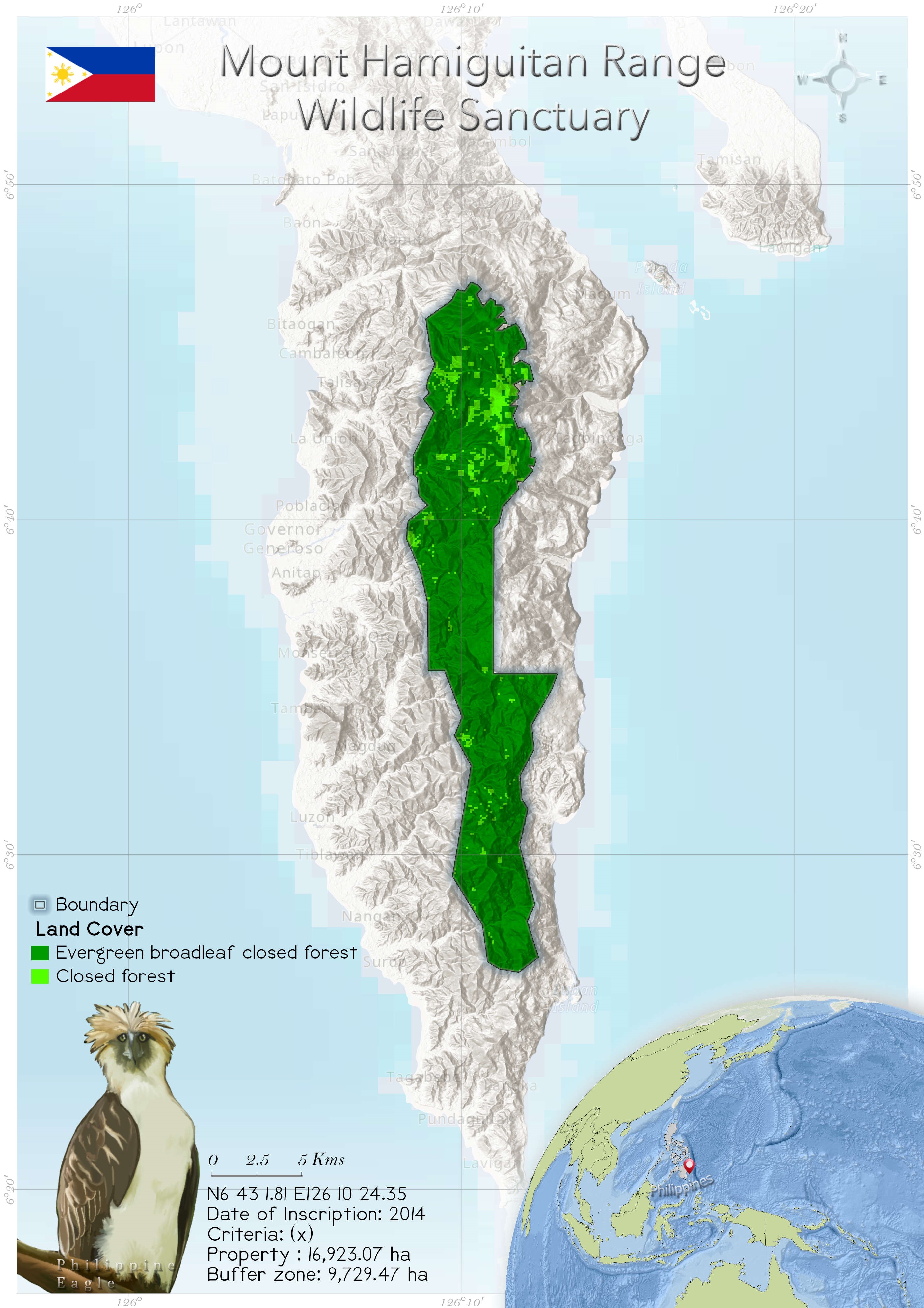
Mount Hamiguitan Range Wildlife Sanctuary (1403)
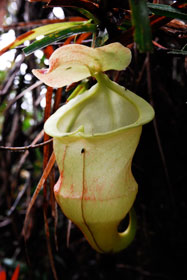 Mount Hamiguitan Range Wildlife Sanctuary (MHRWS), inscribed as a world heritage site in the year 2014, forms a mountain ridge running north-south along the Pujada Peninsula in the south-eastern part of the Eastern Mindanao Biodiversity Corridor in Philipines. Covering an area of 16,923.07 ha, the site is situated at an elevation range of 75-1,637m above sea level. It remains a critical habitat for a number of species of elevated conservation interest as well as those endemic to the site, the island and the Philippines. The site harbours a large diversity of plants and animals including large numbers of endemic species, such that the site represents a significant endemism hotspot containing species that exist only in this region.
The site has a good conservation status and experiences low threat. The various highly diverse mountain ecosystems and varied habitats within the site remain in good conditions. However, greater baseline data and monitoring is required in order to establish trends in this value. The major threats that arise in the region are from outside the boundary like illegal mining. The Mount Hamiguitan Protected Area Management Board (PAMB) oversees protection and management of the World Heritage site. The Protected Area Management Office conducts regular monitoring and patrol activities over the core and buffer zones. The protection of the Mount Hamiguitan Range Wildlife Sanctuary is further strengthened by the engagement with and involvement of local and indigenous communities living in its periphery in the management of the property.
Mount Hamiguitan Range Wildlife Sanctuary (MHRWS), inscribed as a world heritage site in the year 2014, forms a mountain ridge running north-south along the Pujada Peninsula in the south-eastern part of the Eastern Mindanao Biodiversity Corridor in Philipines. Covering an area of 16,923.07 ha, the site is situated at an elevation range of 75-1,637m above sea level. It remains a critical habitat for a number of species of elevated conservation interest as well as those endemic to the site, the island and the Philippines. The site harbours a large diversity of plants and animals including large numbers of endemic species, such that the site represents a significant endemism hotspot containing species that exist only in this region.
The site has a good conservation status and experiences low threat. The various highly diverse mountain ecosystems and varied habitats within the site remain in good conditions. However, greater baseline data and monitoring is required in order to establish trends in this value. The major threats that arise in the region are from outside the boundary like illegal mining. The Mount Hamiguitan Protected Area Management Board (PAMB) oversees protection and management of the World Heritage site. The Protected Area Management Office conducts regular monitoring and patrol activities over the core and buffer zones. The protection of the Mount Hamiguitan Range Wildlife Sanctuary is further strengthened by the engagement with and involvement of local and indigenous communities living in its periphery in the management of the property.
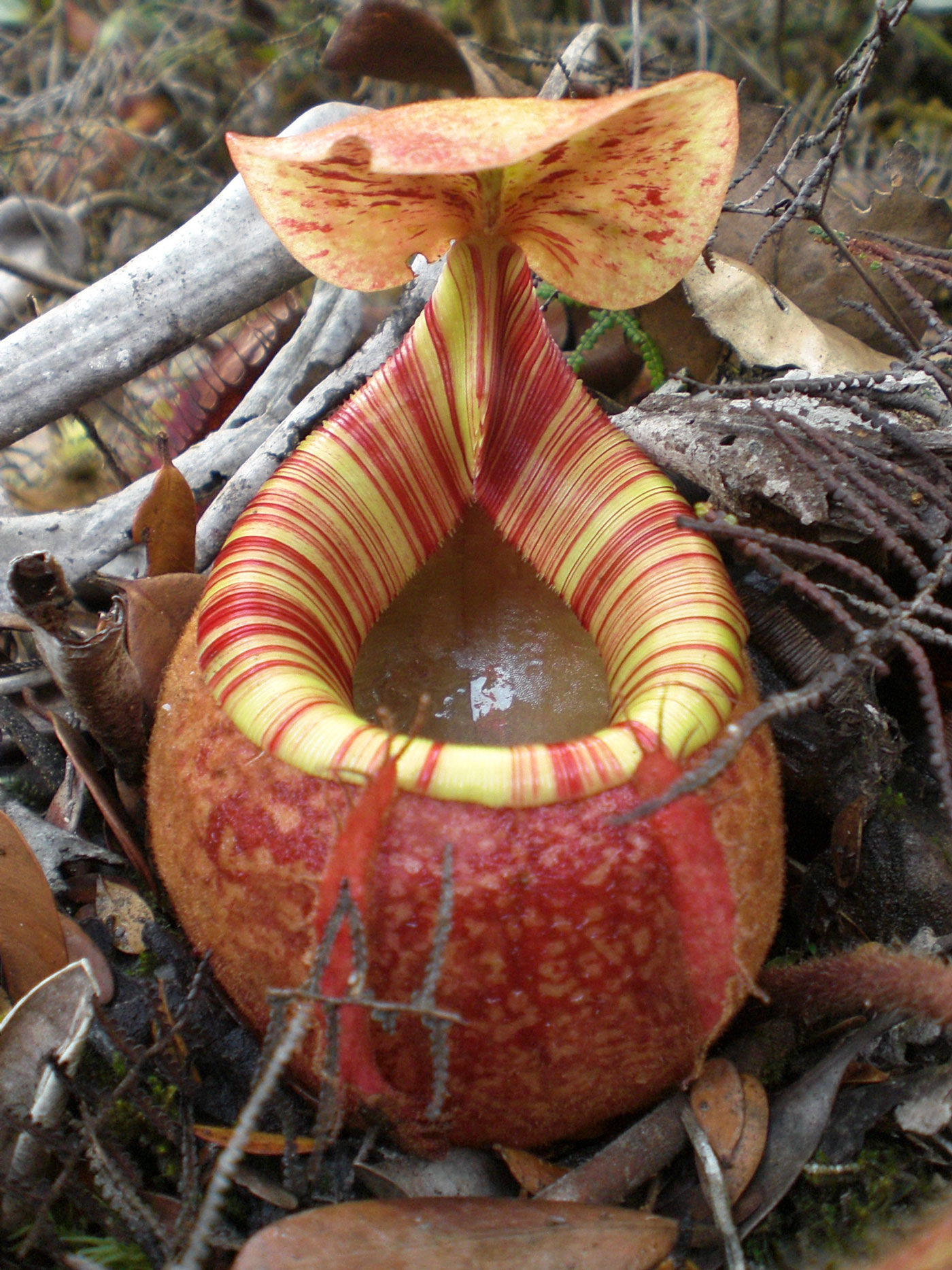 Mount Haminguitan range Wildlife Sanctuary is located (6° 43' 1.81" N and 126°10' 24.35" E) in the Davo Oriental province of Phillipines. These Mountain ranges form a north-south running mountain ridge along the Pujada Peninsula in the southeastern part of the Eastern Mindanao Biodiversity Corridor, situated at an elevation range of 75-1,637m above sea level. (UNESCO 2014) It occupies the land area within the political boundaries of Mati, San Isidro, and Governor Generoso. The Mount Haminguitan range Wildlife Sanctuary is spread across an area of 16,923.07 ha with 9,729.47 ha area occupied by the buffer zone of the sanctuary.
Being inscribed in the year 2014, the Mount Haminguitan range Wildlife Sanctuary became the first site to be inscribed in the Mindanao region and the sixth in the Philippines. The Mount Hamiguitan Range Wildlife Sanctuary protects typical mountain ecosystems of the biogeographic region and includes the agro-ecosystem, dipterocarp, montane, mossy, and mossy-pygmy forests. The site harbours a wide range of endemic, rare and ecoomically important species of flora and fauna. These forests are characterized by a diverse range of vegetation types including a unique mossy pygmy forest (Amoroso et al. 2009).
It is home to a total of 1,380 species with 341 species which are endemic to this region. The species like Philippine Eagle (Pithecophaga jefferyi) and the Philippine Cockatoo (Cacatua haematuropygia), as well as the trees Shorea polysperma, Shorea astylosa, and the orchid Paphiopedilum adductum are iconic and endemic to the region. The region includes 74 species of ferns and lycophytes, 6 species of gymnosperms, 30 flowering species and 118 species of shrubs and trees (Amoroso et al. 2018). 75% species of amphibians and 84% species of reptiles are endemic to this region.
Mount Haminguitan range Wildlife Sanctuary is located (6° 43' 1.81" N and 126°10' 24.35" E) in the Davo Oriental province of Phillipines. These Mountain ranges form a north-south running mountain ridge along the Pujada Peninsula in the southeastern part of the Eastern Mindanao Biodiversity Corridor, situated at an elevation range of 75-1,637m above sea level. (UNESCO 2014) It occupies the land area within the political boundaries of Mati, San Isidro, and Governor Generoso. The Mount Haminguitan range Wildlife Sanctuary is spread across an area of 16,923.07 ha with 9,729.47 ha area occupied by the buffer zone of the sanctuary.
Being inscribed in the year 2014, the Mount Haminguitan range Wildlife Sanctuary became the first site to be inscribed in the Mindanao region and the sixth in the Philippines. The Mount Hamiguitan Range Wildlife Sanctuary protects typical mountain ecosystems of the biogeographic region and includes the agro-ecosystem, dipterocarp, montane, mossy, and mossy-pygmy forests. The site harbours a wide range of endemic, rare and ecoomically important species of flora and fauna. These forests are characterized by a diverse range of vegetation types including a unique mossy pygmy forest (Amoroso et al. 2009).
It is home to a total of 1,380 species with 341 species which are endemic to this region. The species like Philippine Eagle (Pithecophaga jefferyi) and the Philippine Cockatoo (Cacatua haematuropygia), as well as the trees Shorea polysperma, Shorea astylosa, and the orchid Paphiopedilum adductum are iconic and endemic to the region. The region includes 74 species of ferns and lycophytes, 6 species of gymnosperms, 30 flowering species and 118 species of shrubs and trees (Amoroso et al. 2018). 75% species of amphibians and 84% species of reptiles are endemic to this region.
Criterion (x)
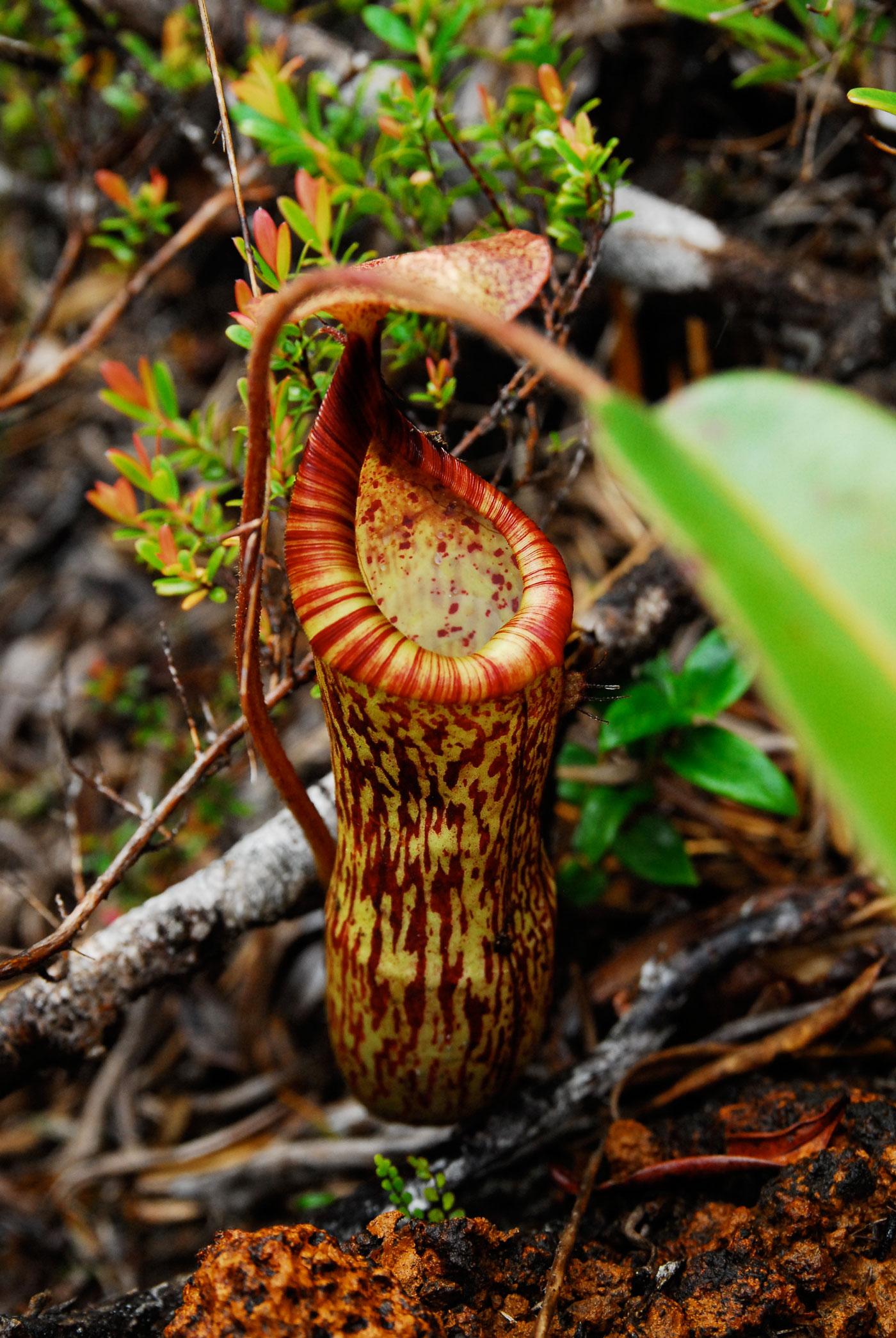 The Mount Hamiguitan Range Wildlife Sanctuary represents a complete, substantially intact and highly diverse mountain ecosystem, in a significant biogeographic region of the Philippines. Its diversity of plants and animals include globally threatened species as well as a large number of endemic species including those species that exist only in the Philippines, only in Mindanao and only in the nominated property. The fragile tropical “bonsai” forest that crowns the Mount Hamiguitan Range Wildlife Sanctuary epitomizes nature’s bid to survive in adverse conditions. As a result of its semi-isolation and its varied habitat types growing in dissimilar soil and climate conditions, its biodiversity has shown a significantly high level of endemicity that has led scientists to believe that there may be more globally unique species waiting to be discovered in the area.
The combination of terrestrial and aquatic ecosystems within the boundaries of the property and the large number of species inhabiting each makes the Mount Hamiguitan Range Wildlife Sanctuary home to a total of 1,380 species with 341 Philippine endemics that include critically endangered species such as the iconic Philippine Eagle (Pithecophaga jefferyi) and the Philippine Cockatoo (Cacatua haematuropygia), as well as the trees Shorea polysperma, Shorea astylosa, and the orchid Paphiopedilum adductum. Its high level of endemicity is well exemplified by the proportion of its amphibian (75% endemic) and reptile (84% endemic) species.
The Mount Hamiguitan Range Wildlife Sanctuary exhibits segmentation of terrestrial habitats according to elevation. In the lower elevations the agro-ecosystem and remnants of dipterocarp forests house some 246 plant species including significant numbers of endemics such as the globally threatened dipterocarps of the genus Shorea. The dipterocarp forest ecosystem at 420-920 m asl is characterized by the presence of large trees and is home to 418 plant and 146 animal species, which include threatened species such as the Mindanao Bleeding-heart dove (Gallicolumba crinigera) and Philippine warty pig (Sus philippensis). At higher elevations the montane forest ecosystem exhibits numerous species of mosses, lichens and epiphytes. This ecosystem type houses 105 animal species representing all the animal groups found in the Mount Hamiguitan Range Wildlife Sanctuary as well as the relatively recently discovered rat species, Hamiguitan hairy-tailed rat (Batomys hamiguitan). The fourth ecosystem type is the typical mossy forest ecosystem characterized by thick mosses covering roots and tree trunks; it provides habitat for the Philippine pygmy fruit bat, (Haplonycteris fischeri) and the threatened Pointed-snouted tree frog (Philautus acutirostris). At the topmost (1160-1200m a.s.l.) is the mossy-pygmy forest ecosystem, adding a unique natural tropical bonsai forest layer to the property. It is the only known habitat in the world of the pitcher plant (Nepenthes hamiguitanensis) and the Delias butterfly (Delias magsadana).
The Mount Hamiguitan Range Wildlife Sanctuary represents a complete, substantially intact and highly diverse mountain ecosystem, in a significant biogeographic region of the Philippines. Its diversity of plants and animals include globally threatened species as well as a large number of endemic species including those species that exist only in the Philippines, only in Mindanao and only in the nominated property. The fragile tropical “bonsai” forest that crowns the Mount Hamiguitan Range Wildlife Sanctuary epitomizes nature’s bid to survive in adverse conditions. As a result of its semi-isolation and its varied habitat types growing in dissimilar soil and climate conditions, its biodiversity has shown a significantly high level of endemicity that has led scientists to believe that there may be more globally unique species waiting to be discovered in the area.
The combination of terrestrial and aquatic ecosystems within the boundaries of the property and the large number of species inhabiting each makes the Mount Hamiguitan Range Wildlife Sanctuary home to a total of 1,380 species with 341 Philippine endemics that include critically endangered species such as the iconic Philippine Eagle (Pithecophaga jefferyi) and the Philippine Cockatoo (Cacatua haematuropygia), as well as the trees Shorea polysperma, Shorea astylosa, and the orchid Paphiopedilum adductum. Its high level of endemicity is well exemplified by the proportion of its amphibian (75% endemic) and reptile (84% endemic) species.
The Mount Hamiguitan Range Wildlife Sanctuary exhibits segmentation of terrestrial habitats according to elevation. In the lower elevations the agro-ecosystem and remnants of dipterocarp forests house some 246 plant species including significant numbers of endemics such as the globally threatened dipterocarps of the genus Shorea. The dipterocarp forest ecosystem at 420-920 m asl is characterized by the presence of large trees and is home to 418 plant and 146 animal species, which include threatened species such as the Mindanao Bleeding-heart dove (Gallicolumba crinigera) and Philippine warty pig (Sus philippensis). At higher elevations the montane forest ecosystem exhibits numerous species of mosses, lichens and epiphytes. This ecosystem type houses 105 animal species representing all the animal groups found in the Mount Hamiguitan Range Wildlife Sanctuary as well as the relatively recently discovered rat species, Hamiguitan hairy-tailed rat (Batomys hamiguitan). The fourth ecosystem type is the typical mossy forest ecosystem characterized by thick mosses covering roots and tree trunks; it provides habitat for the Philippine pygmy fruit bat, (Haplonycteris fischeri) and the threatened Pointed-snouted tree frog (Philautus acutirostris). At the topmost (1160-1200m a.s.l.) is the mossy-pygmy forest ecosystem, adding a unique natural tropical bonsai forest layer to the property. It is the only known habitat in the world of the pitcher plant (Nepenthes hamiguitanensis) and the Delias butterfly (Delias magsadana).
Status
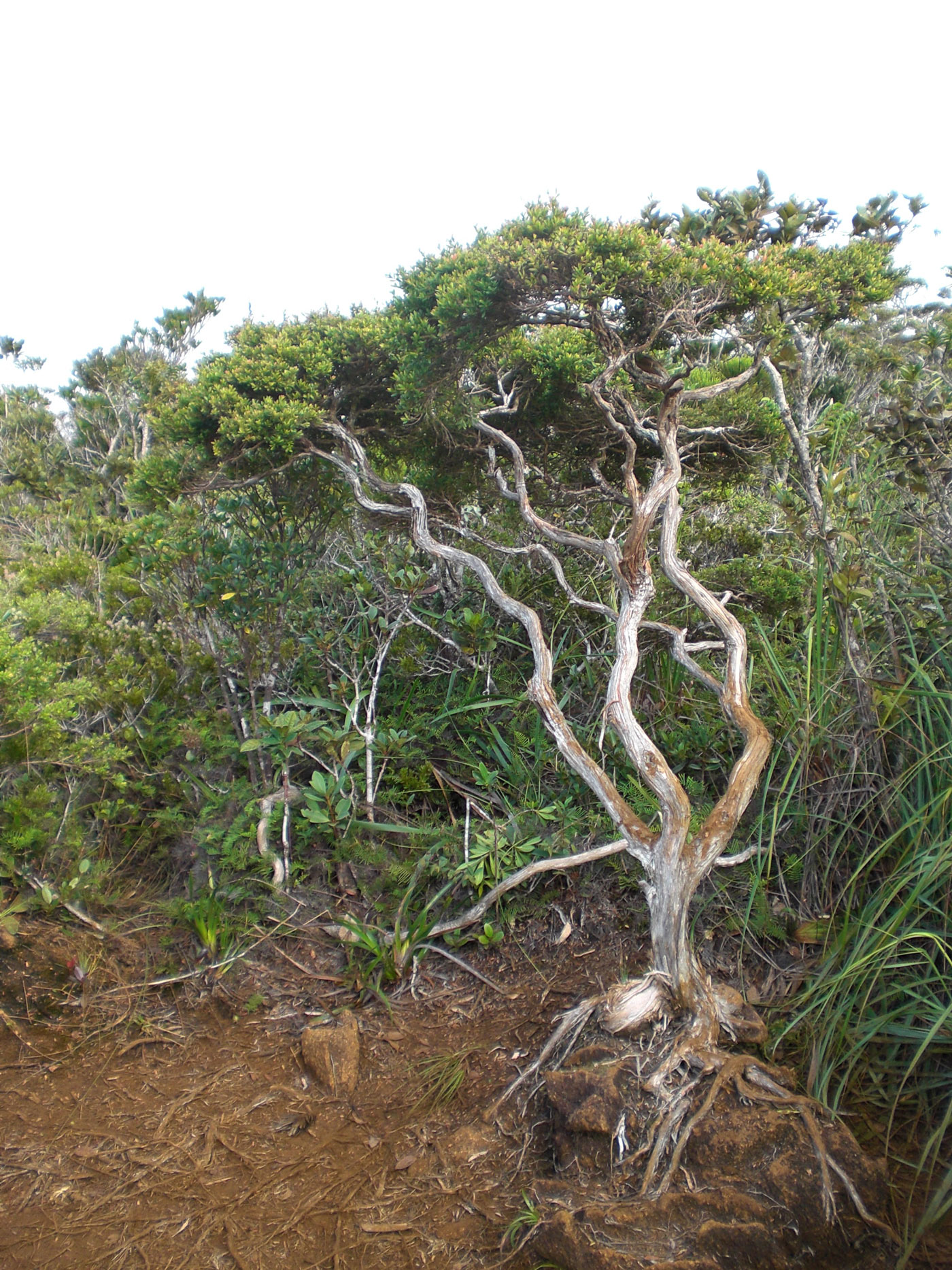 Mount Hamiguitan Range Wildlife Sanctuary is a component of the Philippines’ National Integrated Protected Areas System (NIPAS). Overall, the conservation outlook of the site is good. The laws control development within the boundaries of the site and are consistent in their objectives to protect the site's key values. Several layers of national and provincial legislation and policies serve to protect the World Heritage site and guide management. These laws delineate the boundaries of the site and protect it from any sort of physical interventions, such as logging, mining exploration or surveying for energy resources. According to the World Heritage Committee report 2014, the responsibilities are shared between the national and local governments in partnership with local stakeholders including local and indigenous communities living in the periphery of the Mount Hamiguitan Range Wildlife Sanctuary.
The law enforcement in the site is primarily carried out by the Protected Area Management Office (PAMO), with the support of The Department of Environment and Natural Resources (DENR) through its Community Environment and Natural Resources Offices and Local Government. There are camera traps installed by the PAMO at specific locations in the park to detect the human activities inside the boundary and to monitor any breaches. There is little data available to confirm the effectiveness of these measures (IUCN Consultation 2020a)
According to the World Heritage Committee report 2014, the monitoring of the threatened and rare plant animal species is being carried out on an annual basis. Of the total number of floral species present in this region, 698 species of angiosperms, 25 species of gymnosperms, 155 ferns and lycophytes are at a risk due to land use change and forest degradation. The terrestrial and aquatic habitats are well preserved and a number of globally threatened and endemic species rely on or occur within the Mount Hamiguitan Range Wildlife Sanctuary. The Mount Hamiguitan Range Wildlife Sanctuary’s marked vertical zonation of vegetation and associated habitats makes it particularly vulnerable to climate change impact (Amorso et al. 2018).
The Mount Hamiguitan Range Wildlife Sanctuary has been inscribed as a world heritage site, owing to biodiversity contained within the site. The threats which appear to the site are the ones originating from outside the site. Increasing the buffer zone area can assist in combating the threats. The government and community coordination should ensure that the surrounding activities do not impact the site. A relatively strong legacy of study and monitoring is required. The trends are unable to be assessed due to the deficiency of baseline data.
Mount Hamiguitan Range Wildlife Sanctuary is a component of the Philippines’ National Integrated Protected Areas System (NIPAS). Overall, the conservation outlook of the site is good. The laws control development within the boundaries of the site and are consistent in their objectives to protect the site's key values. Several layers of national and provincial legislation and policies serve to protect the World Heritage site and guide management. These laws delineate the boundaries of the site and protect it from any sort of physical interventions, such as logging, mining exploration or surveying for energy resources. According to the World Heritage Committee report 2014, the responsibilities are shared between the national and local governments in partnership with local stakeholders including local and indigenous communities living in the periphery of the Mount Hamiguitan Range Wildlife Sanctuary.
The law enforcement in the site is primarily carried out by the Protected Area Management Office (PAMO), with the support of The Department of Environment and Natural Resources (DENR) through its Community Environment and Natural Resources Offices and Local Government. There are camera traps installed by the PAMO at specific locations in the park to detect the human activities inside the boundary and to monitor any breaches. There is little data available to confirm the effectiveness of these measures (IUCN Consultation 2020a)
According to the World Heritage Committee report 2014, the monitoring of the threatened and rare plant animal species is being carried out on an annual basis. Of the total number of floral species present in this region, 698 species of angiosperms, 25 species of gymnosperms, 155 ferns and lycophytes are at a risk due to land use change and forest degradation. The terrestrial and aquatic habitats are well preserved and a number of globally threatened and endemic species rely on or occur within the Mount Hamiguitan Range Wildlife Sanctuary. The Mount Hamiguitan Range Wildlife Sanctuary’s marked vertical zonation of vegetation and associated habitats makes it particularly vulnerable to climate change impact (Amorso et al. 2018).
The Mount Hamiguitan Range Wildlife Sanctuary has been inscribed as a world heritage site, owing to biodiversity contained within the site. The threats which appear to the site are the ones originating from outside the site. Increasing the buffer zone area can assist in combating the threats. The government and community coordination should ensure that the surrounding activities do not impact the site. A relatively strong legacy of study and monitoring is required. The trends are unable to be assessed due to the deficiency of baseline data.
